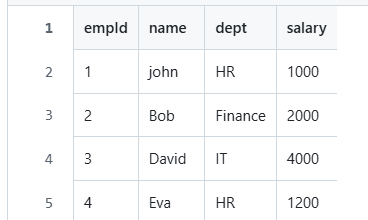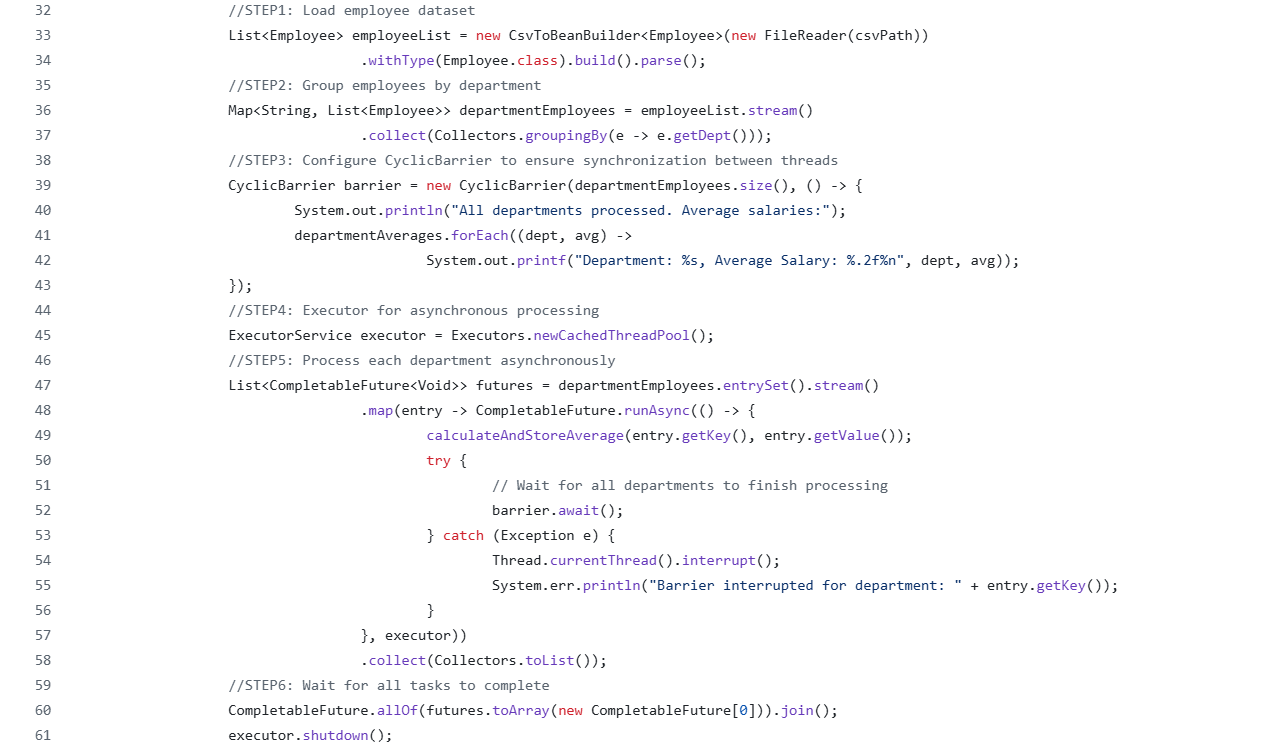Enterprise functions in as we speak’s world more and more require the power to course of massive datasets asynchronously. Knowledge processing should concurrently join and compute outcomes. This text explains how CyclicBarrier and Completable Future, collectively, carry out effectively in processing and producing desired outcomes from massive knowledge units.
Why use asynchronous processing?
Asynchronous processing permits duties to run with out blocking others. Not like synchronous processing, which runs duties sequentially, it permits a number of duties to proceed concurrently. This technique is helpful for duties that require ready for exterior assets resembling community requests. It will increase efficiency and responsiveness in functions.
On this article, asynchronous processing of a given dataset is ensured utilizing the next properties.
- Cyclic barrier: A synchronizer that enables a set of threads to attend for one another to succeed in the identical barrier level earlier than persevering with, which implies that a thread can’t transfer previous some extent (bottleneck) till all Threads shouldn’t be on the identical block.
- Full future: Java gives a polynomial class that helps asynchronous computation. It’s a highly effective device for growing the efficiency of non-blocking computation functions. In our state of affairs, this enables us to run parallel common wage calculations for every division.
Downside assertion
Let’s take into account a comma-separated file (CSV) containing a listing of workers, their departments, and their salaries. The target is to seek out the common wage for every division utilizing an asynchronous course of; In different phrases, execute the code in parallel and scale back the execution time.
The dataset proven beneath is offered on the GitHub location.

Answer method
The answer is split into the next steps.
- Learn the CSV file and parse the worker knowledge.: The OpenCV library is used to learn and parse a CSV file into a listing of Java objects employed.
- Group workers by division.: Utilizing Java’s Collectors.groupingBy, we’ll group workers by their division.
- Calculate the periodic common salaries.: Utilizing Completable Future, the common wage of every division is calculated concurrently.
- Synchronize the outcomes.: With CyclicBarrier, it’s ensured that each one division calculations are accomplished earlier than the outcomes are generated.
The code snippet is as follows:

Clarification of Regulation
- Loading knowledge.: The opencsv library is used to parse the workers.csv file into the checklist of workers. This permits us to simply work with worker knowledge in our code.
- Grouping by division: Workers are grouped in line with their division subject utilizing static manufacturing facility technique.
Collectors.groupingBy()(Obtainable since Java 8) Permits knowledge assortment processing in a declarative method. - Asynchronous execution: The wage calculation of every division is finished utilizing the counterfactual.
CompletableFuture.runAsync. This ensures that calculations are carried out in parallel, utilizing out there CPU assets effectively. - Synchronization with CyclicBarrier: CyclicBarrier ensures that each one division calculations are accomplished earlier than producing closing outcomes. gave
barrier.await()The tactic ensures that every thread waits for the others to succeed in this level earlier than continuing. - Calculating and storing averages: gave
calculateAndStoreAverageThe tactic calculates the common wage for every division and shops it in a ConcurrentHashMap for thread-safe entry. - The end result: After all of the threads are accomplished, the common wage of every division is printed on the console beneath.

The end result
Asynchronous programming
Completable Future permits duties to be executed concurrently, making it doable to compute departmental averages in parallel.
Efficient synchronization
The CyclicBarrier ensures that this system waits till all departments have accomplished their common wage calculations.
Java concurrency
Combining CompletableFuture and CyclicBarrier is a straightforward and environment friendly concurrency answer, making this method excellent for a number of unbiased duties that must run in parallel.
It’s a very environment friendly and scalable method to increase and handle a lot of division or worker information with out main modifications to the underlying logic. Subsequently, by following these asynchronous programming patterns, Java builders can now create high-performance functions that course of knowledge in parallel in a single thread.
The entire code snippet is offered in my GitHub repository.
References
The article relies on numerous official sources. The official JAVA SE 17 documentation for CyclicBarrier and Completable Future could be very insightful concerning performance and their implementation.
Baeldung’s Information to CyclicBarrier gives sensible examples and use instances to indicate use cyclicBarrier for concurrent programming. Collectively, these references present the background for the concepts and examples introduced on this article.







